
Greek filmmaker Sofia Exarchou’s second feature, Animal, is screening in Sarajevo’s competition after its world premiere at Locarno.
The film is set in an all-inclusive island resort under the hot Greek sun, where a group of ‘animateurs’ are employed to ensure that there is never a dull moment for the tourists. Kalia (Dimitra Vlagopoulou) is the leader of the pack, but as summer intensifies and the show must go on, her struggles are revealed.
Exarchou’s first feature film, Park, premiered at Toronto IFF and San Sebastian IFF in 2016, where it won the New Directors Award.
Animal is produced by Maria Drandaki and Maria Kontogianni at Greece’s Homemade Films, and co-produced by Austria’s Nabis Filmgroup, Romania’s Digital Cube, Cyprus’ Felony Film Productions and Bulgaria’s ARS Digital Studio. International sales are handled by Shellac.
How did you come up with this idea and why did you decide to tell this story?
I wanted to make a film about labour, about the working system in Western Europe and capitalism in general. I opted for the tourism industry, as a Greek I know a lot about it. I know how hard the working conditions inside the system. But I didn’t want to have resort employees as characters, but rather a group of animateurs, because then I could also explore the topic of entertainment, which I find very interesting - the role of entertainment in the present day and how it plays out in capitalism.
The film is a co-production between five countries. How did you meet your producer Maria Drandaki of Homemade Films and how did you build this production?
It was complicated. The development and funding period was the longest and most tiring, because I knew even as I was writing the script that it would be a quite big budget for a Greek film - because of the hotels, a lot of extras, clubs, costumes, a large ensemble of actors, mainly shooting outside of Athens… So I was really anxious even before I talked with Maria. Then I gave her one of my first treatments. She liked my previous film, she wanted to work with me, and she liked the script. And we started working on which countries we were going to approach in order to reach our budget.
We applied to the Greek Film Centre in January 2018 but the results didn’t come in until spring of 2020. So, we were talking with co-producers but we were not able to apply in other countries without the financing from the Greek Film Centre. So that was a huge delay in our process. We reached our final budget just a few months before shooting, after we got the funding from Eurimages, and shot from mid-September until mid-November of 2022.
How did you cast the actors and work with them?
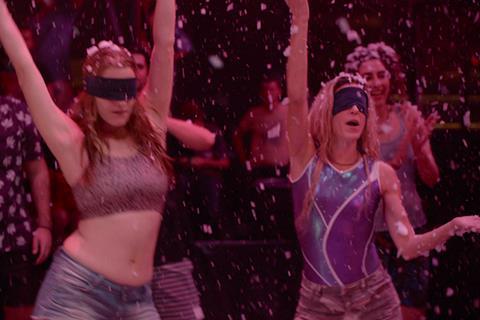
I knew it had to be an ensemble and I wanted it to look like a modern circus. So, I wanted them to be of different sexes and ages, somebody who is the funny one, somebody who is the strong one, a sexy one and so on. I also knew that the ensemble had to include actors, dancers and performers, because that’s what you need to create these shows, but also I expected that dancers would be able to help actors with how to use their bodies. And I wanted actors for the main characters. Kalia had to have both skills, and Dimitra Vlagopoulou studied both dancing and acting so she was perfect for this character. Then I slowly started auditioning, first one by one, but then I would enlarge these groups to see how the group dynamics and energy play out. In the end, we had six dancers and performers, one of them - Ahilleas Chariskos who plays Simos - comes from the circus, and three actors: Vlagopolou, Flomaria Papadaki who plays Eva, and Chronis Barbarian who plays Thomas.
We rehearsed a lot, first by improvising to understand the atmosphere of each scene and the feeling of this universe and to create the dynamics between the characters. Then we started with show rehearsals with a choreographer and we were developing what these animateurs do, which is very different from just dancing or acting. Then we went back to acting rehearsals and when we started shooting, it was really precise. It was all like one big choreography, we were on a tight schedule and just went shooting.
Where did you shoot and what were the biggest challenges during the production?
We shot in two neighbouring resorts in Crete, which we needed because one had a better outdoor environment and the other had more interesting interiors. But I didn’t actually start from the resort. It was first crucial to find the housing of these characters. I wanted them to always be near a touristic fiesta but at the same time to feel that it’s almost deserted, like it is on the edge of this world. I knew that Crete would be the right landscape, it has a lot of brown and yellow during summer, so the feeling is almost like in a desert. The most interesting was how this location inspired the actors and the crew. We were actually staying in one of these hotels and all around us were tourists, even though it was the end of the season, and that really infused the atmosphere during the shooting.
What would you like the audiences to take away from your film?
I think I would like them to take the experience of the film as it is, because it is a bit of a roller coaster. It invites you to go with the characters and their experience both intellectually and emotionally. It’s a little bit like an onion, it starts with a socio-political context, and as it progresses, the layers peel off and you start discovering this universe and the group, but then it focuses on Kalia and follows her completely, turning into an existential trip. But after you leave the theatre, you can also remember all the social and political questions too. For me that would be the most beautiful, if people could experience it as it is structured, to not be afraid to follow it, even if sometimes it’s a bit difficult, or it’s a bit raw, too emotional, to just delve into the film and just experience it as it is.


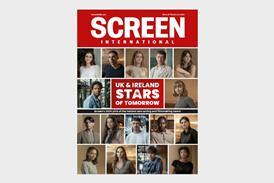
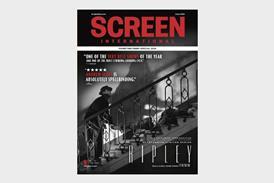

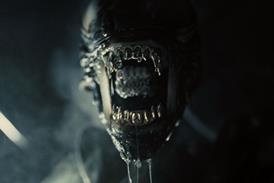

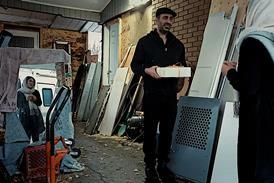
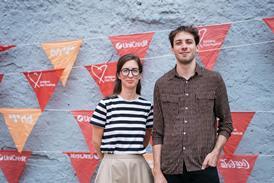

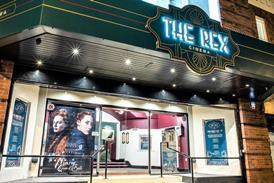


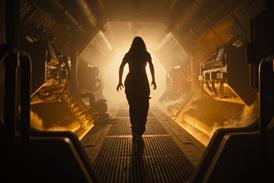


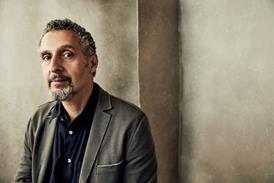







No comments yet